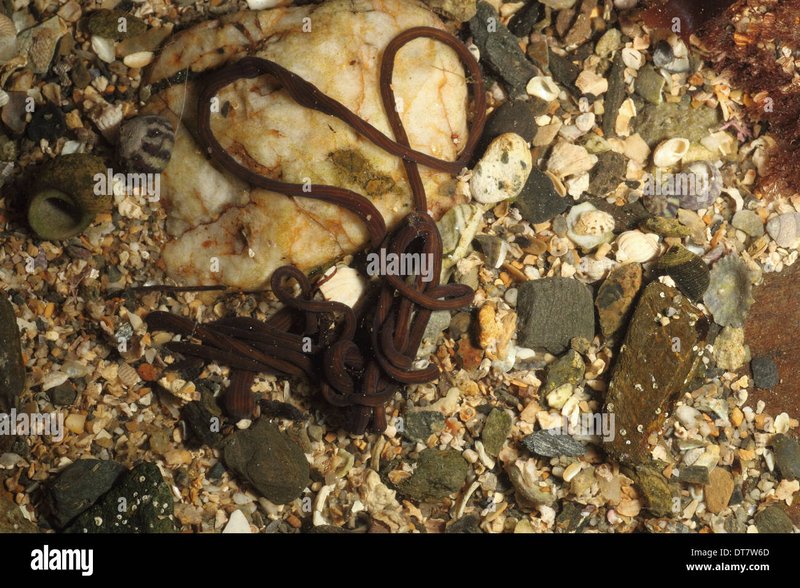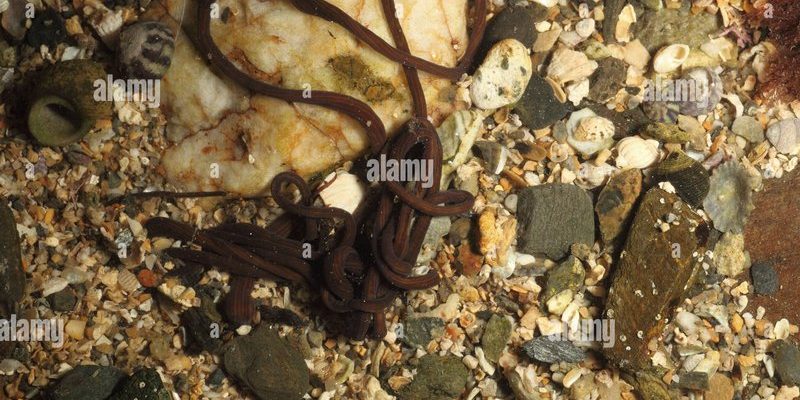
Bootlace worms, or *Lineus longissimus* as scientists call them, are not your everyday worms. They live in the intertidal zone, the area between the high and low tide marks. When the tide drops, they’re exposed to the air, and that can be risky. Just like you wouldn’t want to be caught without water during a hot day, these worms need to stay moist to survive. Let’s dive into how they manage to stay alive and thrive even when the water’s gone.
The Challenge of Desiccation
One of the biggest threats bootlace worms face is **desiccation**, which is a fancy word for drying out. Imagine leaving a sponge out in the sun; it shrivels and loses its effectiveness. Similarly, when bootlace worms are exposed to air, they risk losing moisture, which is vital for their survival. The worms have a soft, slimy exterior that helps them maintain moisture, but it’s not foolproof.
Bootlace worms use a few brilliant strategies to combat this problem. Firstly, they can retract into their burrows if the tide goes out too far. Think of it like a turtle pulling into its shell—this helps keep them damp and safe from direct sunlight. These burrows, made of a slimy mucus, also act like a protective barrier against the harsh elements. So, when the tide is low, the worms can hide out and minimize the risk of drying out.
Moreover, these worms can also absorb moisture from the air around them. They don’t just give up and wait for the tide to come back in; they actively seek ways to retain or gather moisture. In a way, they’re like little water-savers—making the most of every drop in their environment.
Staying Moist: The Importance of Mucus
You might be wondering why you keep hearing about mucus. It sounds a bit gross, but for bootlace worms, it’s a lifeline. Mucus plays a crucial role in their survival strategy at low tide. **This slimy secretion** not only helps them retain moisture but also serves as a protective layer against drying.
When the worms are submerged in water, that mucus film is constantly replenished. However, when the tides recede, they need to manage that mucus carefully. Think of it as wearing a jacket when it’s chilly. It keeps you warm and cozy; in the same way, mucus keeps the worms from losing water. During low tide, they can concentrate their mucus production to create an even thicker protective layer.
Additionally, the mucus may contain special proteins that attract water molecules. This act of attracting water helps the worms retrieve moisture from the air around them. So, even when it feels like there’s no water to be found, bootlace worms are working behind the scenes to stay hydrated.
Behavioral Adaptations
Beyond their physical attributes, bootlace worms have some interesting behavioral adaptations that help them survive. One such behavior is their ability to move around and find the best spots for shelter. When the tide drops, these worms can shift deeper into the mud or the sand where moisture is more likely to remain. This behavior is similar to how people look for shady spots on a hot day!
Another noteworthy adaptation is the timing of their activity. Bootlace worms tend to be more active during high tide when they can hunt for food and explore their environment. When the tide is low, they have a much slower pace, which helps conserve energy and moisture. It’s like knowing when to relax on a lazy Sunday afternoon.
Additionally, their long, segmented body allows them to burrow quickly into the substrate, securing themselves against potential threats. Just like a hedgehog rolls into a tight ball when threatened, bootlace worms have their unique way of retreating into safety.
The Role of Environment
Another fascinating aspect of bootlace worms is how their environment influences their survival strategies. The intertidal zones where they thrive have various microhabitats, from mudflats to rocky outcrops. Each of these spots presents different moisture levels and risks of desiccation.
In mudflats, for example, the silt retains moisture better than rocky areas. Bootlace worms have adapted to these different environments, optimizing their chances of survival based on where they live. If they find themselves in a drier environment, they might dig deeper or change their mucus production to counteract the loss of moisture.
Environmental factors like temperature and humidity also come into play. On particularly hot days, bootlace worms will seek cooler areas or burrow even deeper to avoid the scorching heat. It’s all about being smart and adaptable, much like we adjust our actions based on weather changes.
Why This Matters
Understanding how bootlace worms avoid desiccation at low tide isn’t just a fun fact; it sheds light on broader themes in biology and ecology. These adaptations reveal how organisms manage their survival in harsh conditions, which can be especially relevant in today’s world. As climate change shifts ecosystems, knowing how creatures like bootlace worms react could help scientists predict changes in marine environments.
Plus, studying these resilient organisms helps inform conservation efforts. If we can learn about their adaptations, we can better protect their habitats, ensuring they continue to thrive even when faced with challenges. You might even say that bootlace worms serve as tiny indicators of the health of their ecosystems.
In summary, bootlace worms are impressive little creatures that have mastered the art of survival in challenging conditions. Their ability to avoid desiccation through mucus production, burrowing behavior, and environmental adaptation showcases the remarkable resilience of nature. Just like we adapt to our changing surroundings, these worms have their own toolkit for thriving when the tide goes out.
So, next time you’re near the shore and see one of these extraordinary creatures, take a moment to appreciate the clever strategies they’ve developed over millions of years. Nature is full of surprises, and bootlace worms are a perfect example of just how fascinating and resourceful life can be.

